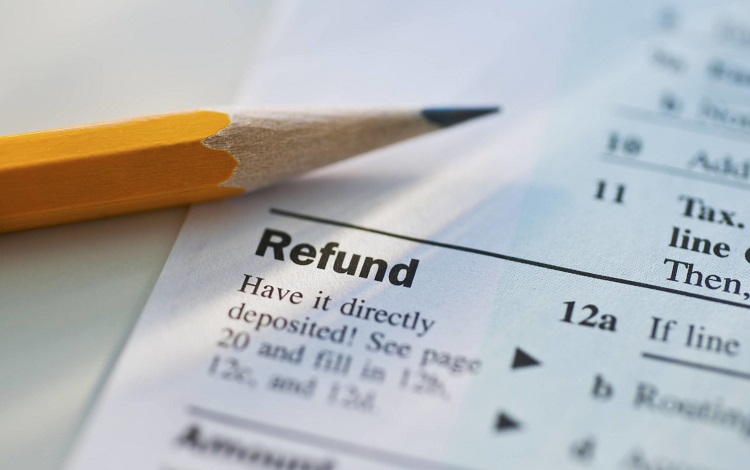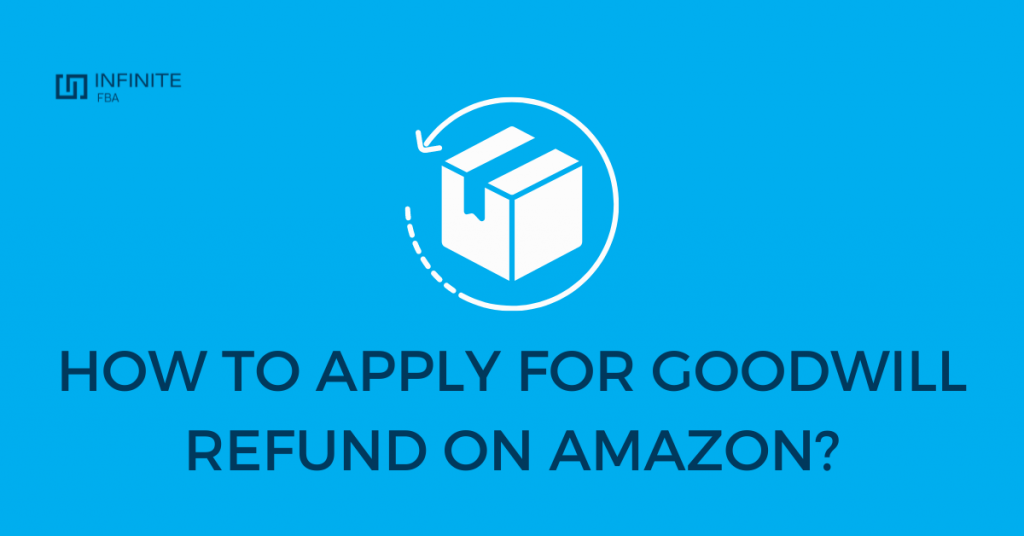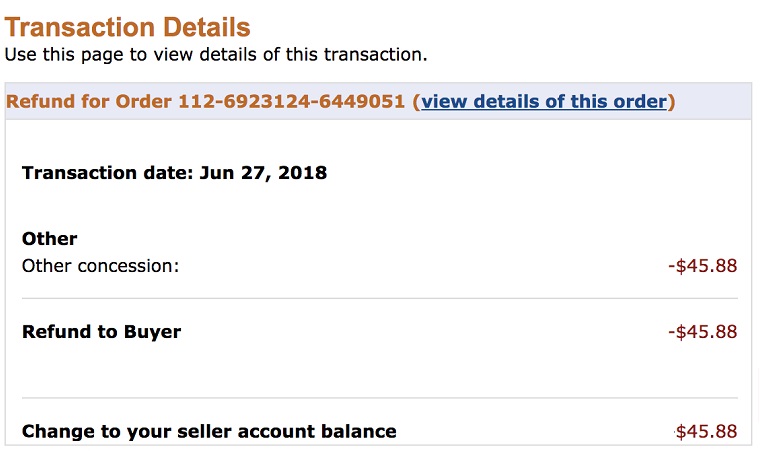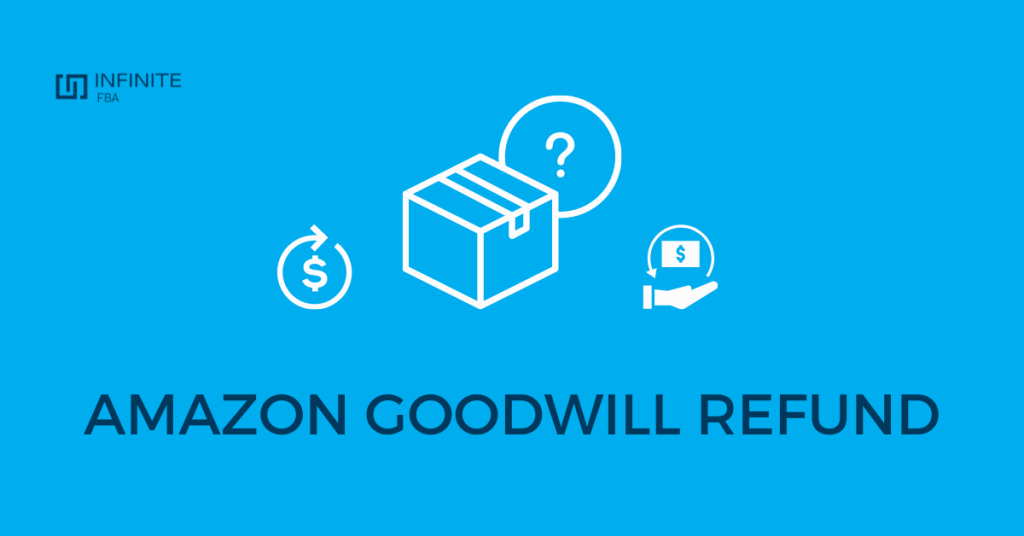When there are issues with orders, some retailers may not see the economic sense in incurring additional costs for shipping an inexpensive item, especially when processing the return can take up to 65% of the original cost of the item.
In such situations, sellers would prefer to offer refunds without asking for the products to be returned. This is quite normal.
However, it may come as a surprise to many people when they receive a Goodwill refund on Amazon.
While these refunds can be pleasant surprises to customers, they can leave many sellers confused.
If that’s you, continue reading to learn everything you need to know about Amazon’s goodwill refunds.
What is a Goodwill Refund?

Picture this: a customer has a not-so-pleasing shopping experience in your large and reputable brick-and-mortar store. And it was your fault.
By the way, the customer is always right (at least in their minds), even if that’s not always the reality.
One of the ways to make up for the bad shopping experience is by apologizing. But an apology usually isn’t very effective. A more practical approach would be to offer some sort of refund.
This can make the customer happy and even turn them into loyal shoppers.
But what if you take things a step further and offer them extra cash in addition to the refund? The result will likely be a word-of-mouth advert from the customer to almost everyone they know and tons of positive reviews.
Okay, this may not be something that you are willing to do if you own a physical store. But that’s the basic concept behind the goodwill refund on Amazon.
When there are processing or shipment issues with orders, it is not out of place for Amazon to issue a refund to the customers in question. And sometimes, the company can also give some additional cash payments to the customer in addition to the refund.
Perhaps more surprising is the fact that the goodwill refund can be a lot bigger than the original cost of the item purchased. It’s like getting an item for free and then getting free money on top of it!
All of these are Amazon’s way of apologizing to aggrieved customers and encouraging them to continue shopping on the platform.
Of course, not all goodwill concessions are up to the cost of the original product. Sometimes, they are not even up to a third of the product’s price.
However, there is anecdotal evidence on social media about refunds exceeding the actual amounts that customers paid for the products.
How Does the Amazon Goodwill Refund Affect the Seller?
It Can Cause Significant Inconvenience for Sellers

Do a quick search on the internet, and it will become glaring that many Amazon sellers are appalled when refunds for “ridiculous” goodwill payments are processed out of their accounts.
In some cases, some sellers’ accounts are completely wiped clean and hit a negative balance, which is not good for business.
Many Amazon sellers receive notifications about a refund, and when they check their account, the figures just don’t add up, as a huge chunk of money is missing from their funds for products that are worth far less than the amount deducted.
It is like killing a fly with a sledgehammer!
Of course, the customer could have genuine reasons to complain to Amazon. It could be a late shipment or even a failed delivery promise.
In any case, sellers aren’t usually pleased when goodwill refunds are taken from their accounts.
However, Amazon sellers may not have any other option than to bear the inconvenience of having the concession refunds processed from their accounts first.
Thankfully, the concession amount taken from your account is directly linked to the order ID. That means the funds will eventually be reimbursed to your account.
Exactly when the reimbursement will happen is an entirely different ball game. If you are lucky, you will only have to wait for about 4 business days to get your account reimbursed. However, it is not strange if sellers have to wait for up to 45 days to get their accounts reimbursed.
To make things worse, you may need to manually notify customer support after the expiration of the waiting period to have your funds paid back into your account.
Thankfully, and to Amazon’s credit, this only happens on rare occasions. In most cases, reimbursements happen automatically and within a few business days.
It Can Lead to Confusion in Inventory Management
Another issue, and perhaps a more serious one, sellers face due to Amazon’s concession refunds is that it can mess up your inventory and make it difficult to keep track of it.
That’s because the goodwill refund shows up in your transaction as a regular inventory reimbursement instead of a special event. In other words, you will be led to assume that the item is in your inventory when, in reality, no physical unit is involved in the whole process. This can be quite confusing.
How to Apply for Goodwill Refund on Amazon?
While the goodwill refund on Amazon might not be something sellers look forward to, customers can leverage the policy to get a refund if they are not happy with their shopping experience.

While customers cannot directly ask for an additional refund amount (goodwill or concession amount), they can ask for a refund if they have issues with orders.
The entire process starts with getting in touch with Amazon customer service and making a complaint about lost packages, late deliveries, or whatever your less-than-pleasing customer shopping experience is.
Next, you should ask for a refund owning to the reasons you have provided.
To request a refund:
- From your Amazon account, navigate to Your Order
- Find the order for which you want to complain about
- Click the “Problem with order” option
- Choose the type of problem you experienced with the order from the list
- Click the “Request refund” option
- Type in your comments (complaints) in the box
- Click Submit
What are the Conditions for Goodwill Refund on Amazon?

While you can ask for a refund as a customer, that’s about all you can do from your end. There is no guarantee that every customer who complains and asks for a refund will automatically receive an additional refund amount.
There is no one-size-fits-all formula for these things. Simply make a genuine complaint and ask for a refund.
You may have come across a handful of messages from individuals on the internet, claiming to have discovered the “secret” to Amazon’s additional concession amount. Usually, these people suggest that customers who get the goodwill refund on Amazon are those who play the sympathy card or buyers who complain a lot.
However, this is not necessarily correct. In fact, you may get into trouble and have your account permanently banned from Amazon if you abuse the company’s return policy.
When you ask for a refund, Amazon treats all complaints on a case-by-case basis and determines whether or not to grant an additional refund amount as a way to compensate for the bad customer experience.
In a nutshell, the customer agents at Amazon get to decide who receives a goodwill refund and who doesn’t.
How Much Can Customers Get from A Goodwill Refund?
The exact amount you can get from a goodwill refund on Amazon depends on the type of order fulfillment.

Here’s a quick rundown:
Fulfilled By Merchant (FBM)
There is a concession refund cap for FBM orders, where the Amazon seller processes and ships the items to the customer.
The actual refunds cannot exceed the original price of the products, but the goodwill refund can. Typically, the concession amount for FBM can be one of the following:
- 50% of the cost that the buyer paid for the product and shipping
- Twice the shipping amount in addition to $30
Fulfilled By Amazon (FBA)
There are no set rules when it comes to FBA orders. The calculation to determine an appropriate concession amount is entirely up to the customer service team.
In other words, customers should expect anything since there is no official goodwill refund cap for FBA orders.
Conclusion

If you wake up one day to discover that funds are missing from your Amazon seller account, the company probably has charged your account for a goodwill refund. The entire process can be inconvenient, but you can rest assured that Amazon will reimburse you.
And while it might not be possible to completely satisfy every single customer that shops at your Amazon store, taking proactive steps to provide the most pleasant shopping customer experience can minimize cases of refunds and additional concession refunds.
The whole idea is to encourage customers to keep using the platform, and not just a way of getting on sellers’ nerves.
Reference Articles





